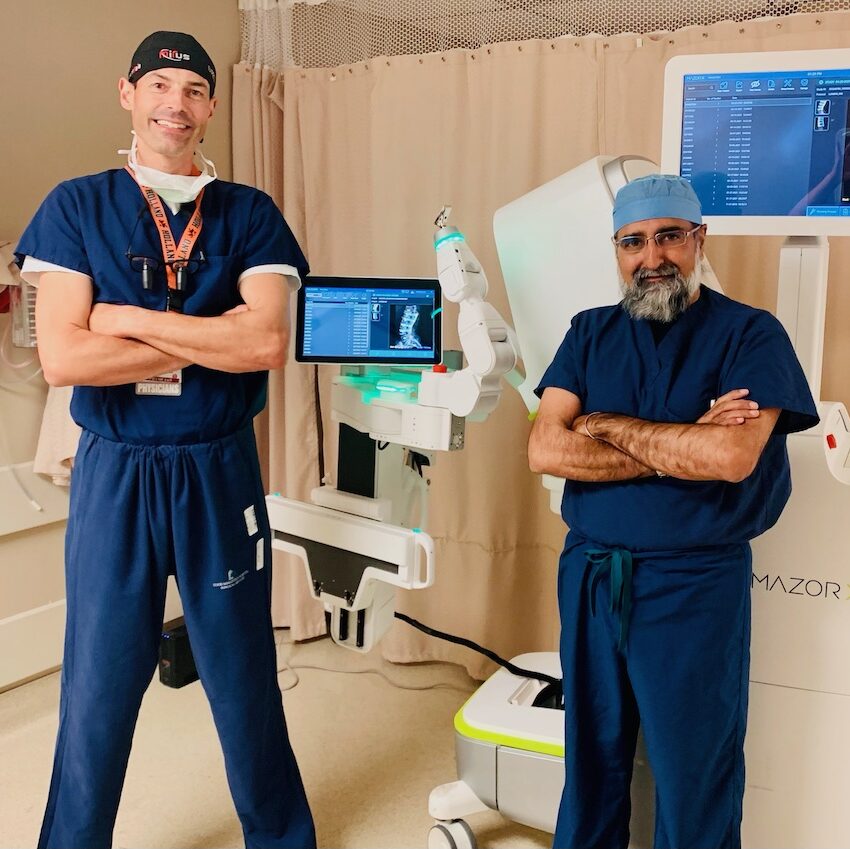A Review of Spine Conditions That Typically Lead To Surgical Treatments
Spinal column conditions such as herniated discs, back constriction, and degenerative disc disease frequently necessitate medical treatments when conventional treatments fail to reduce persistent signs and symptoms. Comprehending the subtleties of each problem and the corresponding surgical alternatives, such as discectomy or spine fusion, is important for effective monitoring.
Herniated Discs
Although lots of individuals with herniated discs might locate relief via conventional treatments, surgery ends up being an essential factor to consider when signs and symptoms linger or aggravate - best spine surgeons in st louis mo. A herniated disc occurs when the soft inner gel of a back disc protrudes via its outer layer, potentially pressing close-by nerves and leading to pain, numbness, or weak point in the extremities
Conventional monitoring normally consists of physical treatment, pain medicines, and corticosteroid shots, which aim to lower swelling and improve function. In cases where these methods stop working to reduce devastating symptoms, surgical choices might be explored.
One of the most usual operation for herniated discs is a discectomy, which entails the removal of the herniated section of the disc to alleviate pressure on the impacted nerve origin. In extra severe instances, spinal combination may be essential to support the affected vertebrae.
Clients are encouraged to review the potential risks and advantages of surgery with their doctor to make an educated choice. Eventually, the goal of any type of surgical intervention is to recover function, alleviate pain, and improve total quality of life for individuals experiencing from herniated discs.
Spine Stenosis
Spinal constriction happens when the areas within the spinal column narrow, resulting in raised stress on the spine and nerves. This condition can establish in numerous areas of the spinal column, including the cervical and lumbar locations, often due to age-related adjustments, such as degenerative disc condition, arthritis, or thickening of tendons.
Individuals with spine stenosis might offer with symptoms that consist of pain, pins and needles, tingling, or weak point, mostly in the legs or arms. These signs can be worsened by activities that include standing or walking, frequently leading individuals to look for alleviation through conventional treatments like physical treatment, medications, or epidural steroid injections.
Nevertheless, when these non-surgical interventions fall short to provide ample relief, medical choices may be taken into consideration. Typical medical procedures for spinal stenosis consist of laminectomy, which includes the removal of part of the vertebra to minimize stress, and spinal combination, which maintains the damaged location.
Spondylolisthesis
Spondylolisthesis happens when one vertebra slides ahead over another, leading to imbalance of the spinal column. This problem can result from numerous elements, consisting of congenital defects, trauma, or degenerative adjustments in the spine. It is most commonly observed in the lumbar area, especially at the L4-L5 and L5-S1 levels.

When non-surgical methods fall short to ease signs or when substantial nerve compression is existing, surgical intervention might be necessitated. Surgical choices can include spinal combination or decompression treatments, aimed at restoring alignment and relieving neurological symptoms.
Degenerative Disc Disease

The problem can be identified with a combination of clinical analysis, imaging researches, and patient background. When these strategies fall short to supply adequate Resources alleviation, surgical treatments may be taken into consideration.
Surgical alternatives for DDD might include back fusion or fabricated disc substitute, targeted at stabilizing the impacted section and easing discomfort (best spine surgeons in st louis mo). Inevitably, the option of therapy is individualized, taking into account the extent of the condition, client wellness, and lifestyle variables
Back Growths

What variables add to the growth of tumors within the spinal column, and just how do they manifest in patients? Spinal growths can occur from various factors, consisting of hereditary predisposition, environmental influences, and pre-existing medical problems. They can be classified as key tumors, originating in the spine, or second lumps, which spread out from various other areas of the body. People might offer with a variety of symptoms, including localized pain, neurological deficits, weakness, or changes in bowel and bladder function, depending on the lump's dimension and area.
Medical diagnosis commonly involves imaging researches such as MRI or CT checks, which assist delineate the lump's attributes and effect on surrounding structures. In analyzing therapy choices, the lump's area, grade, and type are vital considerations. Surgical treatment may be warranted to alleviate symptoms, acquire a biopsy, or get rid of the lump totally. The objective of surgery is usually to decompress neural aspects and support the back. Adjuvant therapies, consisting of radiation or radiation treatment, might additionally be necessary depending on the growth's nature. Early discovery and intervention are essential for maximizing results in patients with back tumors.
Verdict
In summary, spinal column problems such as herniated discs, spinal stenosis, spondylolisthesis, degenerative disc condition, and spine lumps frequently necessitate surgical treatment due to Click This Link their prospective to create significant pain and practical disability. While conservative treatments may supply temporary relief, surgical alternatives come to be vital when signs persist or aggravate. Prompt medical diagnosis and intervention play a vital duty in recovering feature and enhancing the quality of life for damaged people, emphasizing the importance of comprehensive spinal care.

Comments on “Comprehending the Expenses Involved with the Best Spine Surgeons in St Louis MO”